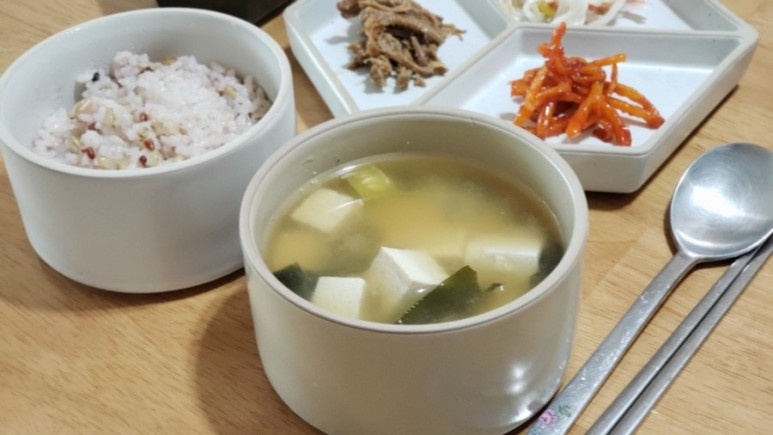
Tofu Soybean Paste Soup Busy Morning Simple Morning Soup without
If you cook a simple soup in the morning, it will be easier to cook three meals a day.
I was thinking about what soup to make today, so I made doenjang soup.
My child likes miso soybean paste soup, but I don't have miso soybean paste at home, but it can taste very similar.
I made soybean paste soup in a similar way as I wanted.
2 serving
Within 20 minutes

주블로그Juboolog
- Ingredients
-
-
Tofu1/4piece
-
Pumpkin1/4ea
-
Seaweed1TS
-
a dried kelp2piece
-
Soybean paste1TS
-
Tzuyu2TS
-
- Cooking Steps
-
STEP 1/9Just a couple of pieces of kelp.
There was a huge piece, so I just used it. STEP 2/9About 1/4 head of tofu, a little bit of pumpkin
STEP 2/9About 1/4 head of tofu, a little bit of pumpkin
And commercially available sauces and tzuyu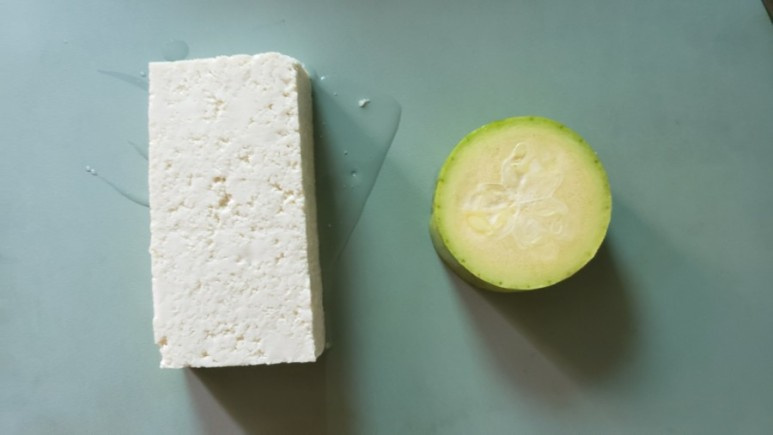 STEP 3/9I boiled the kelp in 500ml of water.
STEP 3/9I boiled the kelp in 500ml of water. STEP 4/9The water turns yellow and smells like kelp soup.
STEP 4/9The water turns yellow and smells like kelp soup.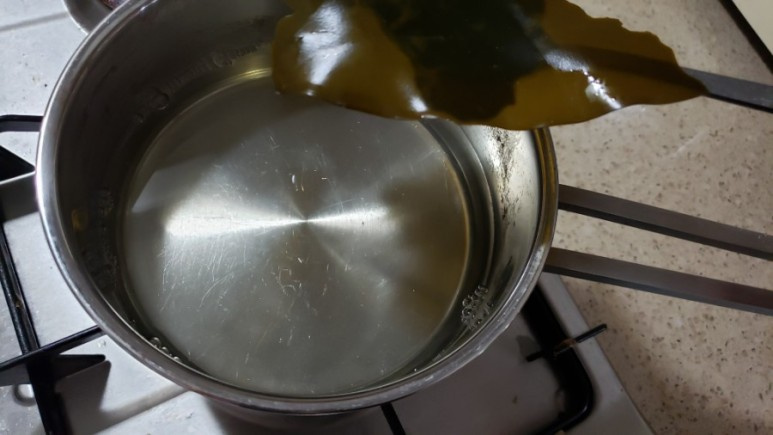 STEP 5/9For some reason, I think the ingredients for the miso doenjangguk go well with square one.
STEP 5/9For some reason, I think the ingredients for the miso doenjangguk go well with square one.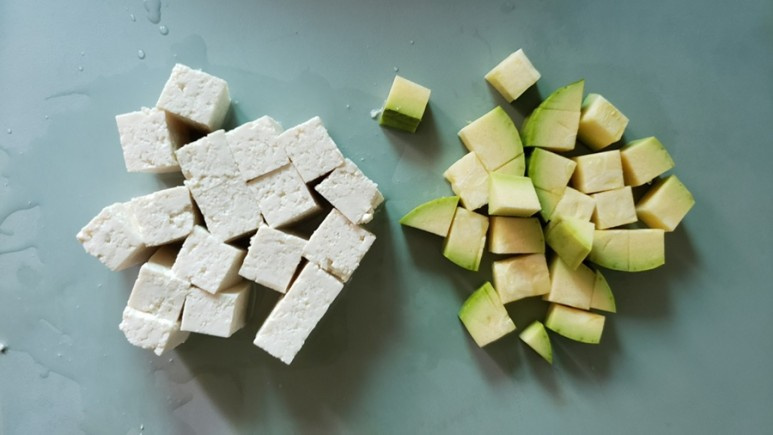 STEP 6/9Let's mix the soybean paste in the broth.
STEP 6/9Let's mix the soybean paste in the broth.
It's a commercially available traditional soybean paste.
I cut it into a spoon of rice and put a spoonful of rice.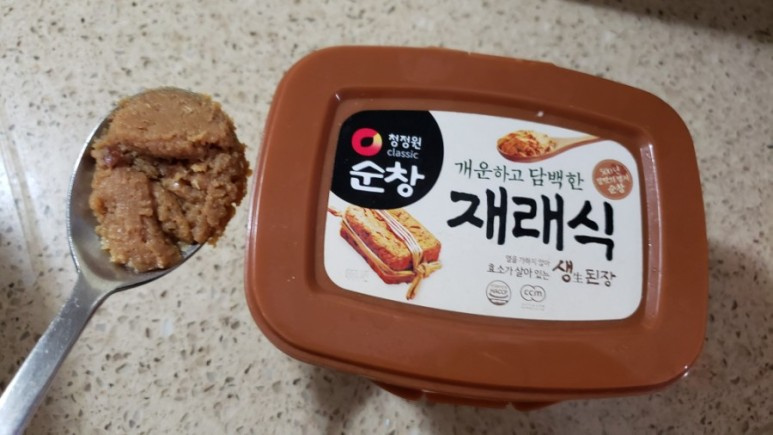 STEP 7/9Mix the soybean paste well in the broth
STEP 7/9Mix the soybean paste well in the broth
I'll put in the tsuyu now.
Tzuyu added two tablespoons.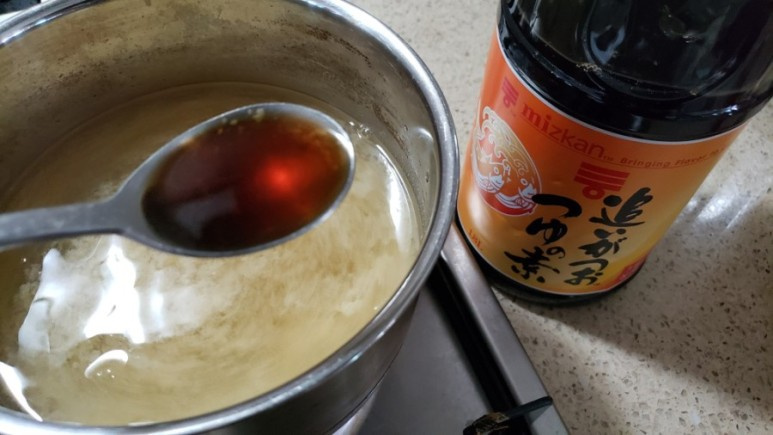 STEP 8/9Now, put the pumpkin and tofu in here,
STEP 8/9Now, put the pumpkin and tofu in here,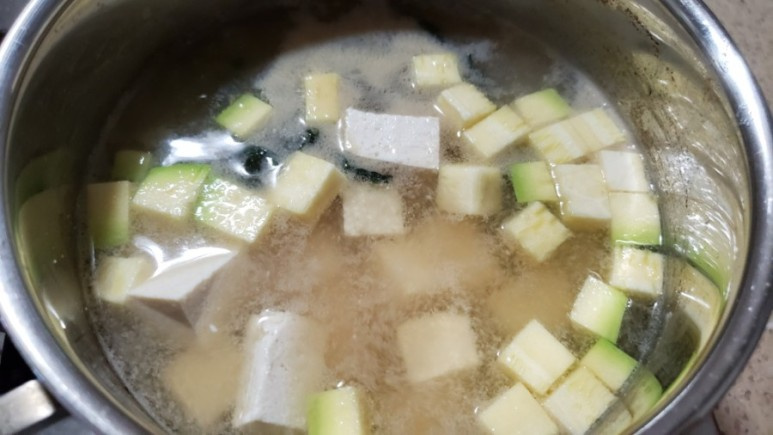 STEP 9/9Seaweed is yoman~~
STEP 9/9Seaweed is yoman~~
It's so comfortable because you can use it right away with the seaweed that was washed and cut.
Boil it well and that's it The biggest difference between Korean soybean paste soup and miso soybean paste soup is the presence or absence of garlic flavor. Korean style has garlic in it to give it a deep and rich taste, and Japanese style soybean paste soup feels clean. Tzuyu has a savory taste, so even if there is no other seasoning, it's just right and it's okay. It would have been more perfect if enoki mushrooms were added instead of pumpkins. Next time, I'll add enoki mushrooms and make it.
The biggest difference between Korean soybean paste soup and miso soybean paste soup is the presence or absence of garlic flavor. Korean style has garlic in it to give it a deep and rich taste, and Japanese style soybean paste soup feels clean. Tzuyu has a savory taste, so even if there is no other seasoning, it's just right and it's okay. It would have been more perfect if enoki mushrooms were added instead of pumpkins. Next time, I'll add enoki mushrooms and make it.
- Kimchi Recommended recipe
-
-
1
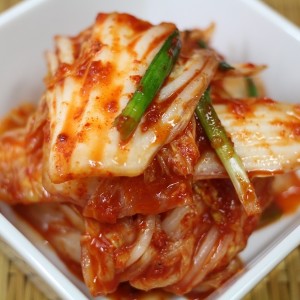 It's deliciously cabbage kimchi4.98(49)
It's deliciously cabbage kimchi4.98(49) -
2
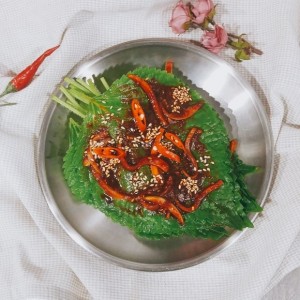 Rice thief popular side dish perilla leaf kimchi golden recipe4.97(125)
Rice thief popular side dish perilla leaf kimchi golden recipe4.97(125) -
3
 Yeolmu Mul Kimchi (very simple ^^)4.93(55)
Yeolmu Mul Kimchi (very simple ^^)4.93(55) -
4
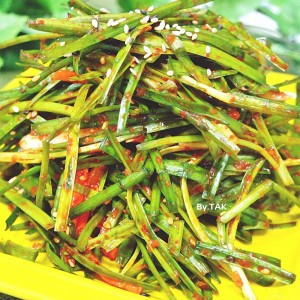 Making leek kimchi simply4.95(73)
Making leek kimchi simply4.95(73)
-
- Bibimbap Recommended recipe
-
-
1
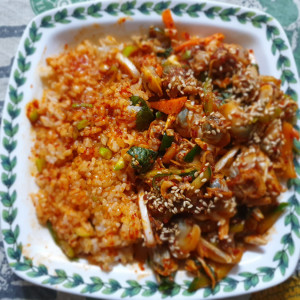 Cockle bibimbap5.00(8)
Cockle bibimbap5.00(8) -
2
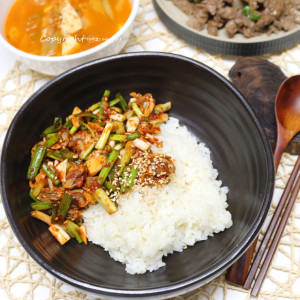 I strongly recommend the golden recipe for cockle bibimbap! (How5.00(9)
I strongly recommend the golden recipe for cockle bibimbap! (How5.00(9) -
3
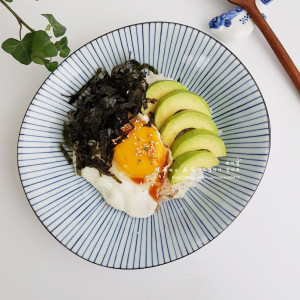 Avocado and egg bibimbap4.94(50)
Avocado and egg bibimbap4.94(50) -
4
 Savory and crunchy bean sprout bibimbap - imitating Jongwon Baek4.86(14)
Savory and crunchy bean sprout bibimbap - imitating Jongwon Baek4.86(14)
-